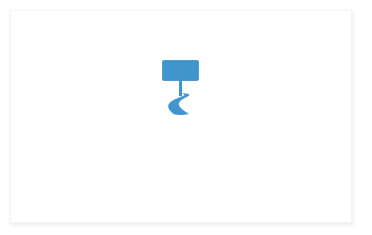Posted on March 23, 2016 by LocAdsAdmin No comments

Mobile Advertising Formats
Ads on a phone. Ads on a tablet. This is mobile advertising.
Plain and simple, though, is not necessarily how you would describe mobile ad formats—at least not at the moment. The fact is, mobile advertising is a nascent channel, still growing and evolving and defining itself. That means that uniformity in both terminology and functionality is a work in progress; we are not quite there yet.
However, it is not complete anarchy! There are a handful of popular mobile advertising formats that bring a bit of organization to what often feels like the Wild West of advertising channels.
Audio
The mobile audio advertising channel was made popular by online music platforms Pandora and Spotify, both of which sell space for audio ads that run in-app and between music segments. However, mobile audio ads are gaining in popularity among brands that offer news-related content like National Public Radio (NPR) and Tribune Media; NPR leverages voice-activated mobile ads within its app that run after news segments.
Pros
The demand for digital audio continues to grow, as seen by the rapid adoption of online radio. According to Edison Research, it is estimated that 115 million Americans now listen to online radio and stream audio content weekly—that is more than half of the population of the US and a 22 percent increase from 2011.
Digital audio also currently represents the least cluttered space in mobile advertising while, at the same time, delivering the same capabilities to pinpoint demographic segments as other online ad units. On top of that, digital audio ads are generally native in nature and audiences are normally tuned-in when they air.
Cons
The industry still suffers from a lack of standardization when it comes to delivering digital audio ads, limiting industry growth due to fragmented technical solutions and proprietary software.
As a whole, the Internet radio ecosystem needs new tools—such as interactive audio ads—to take advantage of the unique characteristics of the mobile audio experience.
Banner ads
Banner ads continue to hold the tile of “most popular mobile ad format.” The ads themselves show up horizontally across either the top or the bottom of a screen. Banner dimensions are typically defined by width and height—measured in pixels—and appear in a variety of ways: from simple text to rich media to banners containing video content. The IAB’s current list of banner ads is as follows:
- Adhesion
- Billboard
- Button
- Expandable
- Filmstrip (Tablet)
- Filmstrip: full screen
- Full-page flex: interstitial or inline
- Halfpage
- Interactive
- Interstitial (Smartphone)
- Large (Feature phone)
- Leaderboard
- Medium (Feature phone)
- Medium rectangle
- Micro bar
- Portrait
- Pull
- Pushdown
- Rectangle
- Rich banner: expandable (Smartphone)
- Rich interstitial (Smartphone)
- Rich wide banner: expandable (Smartphone)
- Sidekick
- Slider
- Small (Feature phone)
- Static (Smartphone)
- Static wide (Smartphone)
- Super leaderboard (provisional unit)
- Wide skyscrape
Pros
Banner ads are inexpensive. As such, they offer a viable way to place a brand logo in front of the masses. Furthermore, banner ads now offer additional functionality such as swipe-to-expand. Also, take into consideration the fact that banner ads do not interrupt a user’s experience in the way an interstitial ad may.
Cons
As the industry saying goes: “When was the last time you clicked on a banner ad?” For that matter, can you recall the last banner ad you saw? And therein lies the hurdle with banner ads: they are everywhere and many people have become numb to them, overlooking them on a regular basis.
According to an article written for VentureBeat, unless you are a brand with a goodly amount of public recognition (e.g., Nike or Southwest Airlines), a banner ad may not provide the return on investment you are hoping to see.
Native ads
Native advertising is a form of paid media where the ad experience follows the natural form and function of the user experience in which it is placed, according to Sharethrough. The Interactive Advertising Bureau (IAB) recognizes six types of native ads:
In-feed units—generally, an ad in “story form” where the content is written by, or in partnership with, the respective publisher’s team to match the surrounding stories
Paid-search units—native ads that appear in search must present their content in a format and layout that is readily available to organic search engine results
Recommendation widgets—these units are a form of native advertising where an ad or paid-content link is delivered via a “widget”
Promoted listings—while these units are found on sites that typically do not have a traditional editorial content well, they are designed to fit seamlessly into the browsing experience and are presented to look identical to the products or services offered on a given site as well as link to a special brand/product page
In-ad (IAB standard) with native-element units—this is an ad placed outside of the editorial well that contains contextually relevant content within the ad and links to an offsite webpage; it is sold with a guaranteed placement so that the purchaser knows exactly what will surround it, and is measured using metrics such as interaction and brand lift
Custom / “Can’t be contained”—this group includes examples that do not neatly fit into one of the above groups or, as in the case of custom playlists, are too platform-specific to warrant their own category (but need to be on a marketer’s radar as native advertising options)
Pros
A better experience for users.
Indeed, eMarketer points out that native advertising is flourishing across social media, content portals, news properties, video-sharing sites and streaming services. A study by BIA/Kelsey estimates that native ad spend on social media alone will grow to $5 billion in 2017.
Cons
Since native ads are platform-tailored, they are more time-consuming to produce at the same scale as, say, banner ads. Also, according to Kiip, few apps are currently built with native ads in mind.
Video ads
Generally speaking, there are two categories of video ads: display and in-stream.
The key difference between in-stream and display video ads is that display video ads play in an ad placement where the core content is non-streaming. In cases where display video is served, the viewer visits the page expecting to read, check social feeds, or otherwise interact with a site where video or in-app streaming content is not anticipated.
Display video is subdivided into the following categories:
- In-banner video
- In-page video
- Rich media (i.e., a banner ad with video)
- Video interstitial
- Incentivized video (i.e., an ad that invites the user to opt-in, watch a video, and earn a reward)
- In-feed video
On the other hand, digital video in-stream ads are served into and executed within a player. That is, the audience is shown an ad in the context of streaming content in an environment where they were expecting video or in-app streaming content.
The Digital Video Committee of the IAB updated its guidelines and best practices for the most common in-stream ad formats and these include:
- Linear video ads
- Non-linear video ads
- Companion ads
Pros
Video ads were cited to have a 13.64 percent click-through-rate (CTR) on mobile, according to an online article in Medium.
According to eMarketer, mobile video ad spend was nearly $6 billion in 2014, second only to ad dollars spent on banners.
In addition, a survey performed by the IAB found that 68 percent of marketers and agency executives expect to see their digital video ad budgets increase in 2016.
Cons
Non-skippable video can be irritating. This is backed up by a study performed by the Mobile Marketing Association (MMA) which found that excessive mobile video ad-frequency dramatically hurts completion and click-through rates for brand advertisers. A study on “viewer abandonment” notes that nearly one-fifth of viewers click out of a video in the first ten seconds, according to Kiip.
Also, creating video content is, generally, a more expensive creative endeavor than creating content for other formats of mobile advertising.
Interstitial ads
The Mobile Majority defines interstitials as ads offering users a chance to partake in high-level engagement with an advertiser’s product, often featuring a compelling and creative call-to-action.
According to Google Developers, interstitial ads are typically displayed at natural transition points in the flow of an application, such as between activities or during the pause between levels in a game. When an app shows an interstitial, the user has the choice to either tap on the ad and continue to its destination, or close it and return to the application. Because of their larger size, interstitial ads require more bandwidth, on average, than traditional banners.
Pros
Interstitial ads overcome mobile’s biggest hurdle—limited real estate—by consuming the entire screen, according to Kiip. Unlike banner ads, interstitials require users to interact by either clicking out of—or through—the ad. Due to these actions, interstitials generally grab users’ attention and produce high conversion rates.
Cons
Users may find interstitial ads interrupting and irritating.
None other than the brainy folks at Google decided to permanently retire interstitial ads in 2015. Google’s research found that, although its own interstitial ads were achieving a level of success (e.g., 9 percent of viewers clicking on Google’s interstitial ad promoting the Google+ app downloaded the app), 69 percent of users left the site altogether after viewing a Google-promoted interstitial ad.
Rich media ads
Rich media ads specialize in creatively engaging with users to generate high CTRs and conversions, according to The Mobile Majority. Often, rich media mobile ads will make use of mobile-specific technology, like GPS functionality, interactivity, video, incorporating tweets, sending a text message or embedding audio.
Rich media ads receive a generous level of consumer attention because they are either entertaining (e.g., offering an interactive mini-game) or convenient (e.g., offering coupons to the user).
Pros
According to a study performed by IAB and comScore, rich media ads result in:
Higher user interaction—79 percent higher
Improved brand recall—18 percent more viewers recalled a respective brand
Improved message recall—23 percent more users remembered the message of a respective ad
Cons
Rich media ads are usually more complex and, therefore, more costly to produce than more traditional mobile ads or, in some instances, even video. Also, if not created and/or produced well, rich media ads may come off as highly intrusive to the user.
Hint
According to data provided by The Mobile Majority, people in the US spend an average of one hour per day looking at their smartphone screens. Consider, too, that smartphones are nearly ubiquitous—roughly three out of every four people in the US has one; that means that three-quarters of the population takes the Internet along with them wherever they are going.



Comments